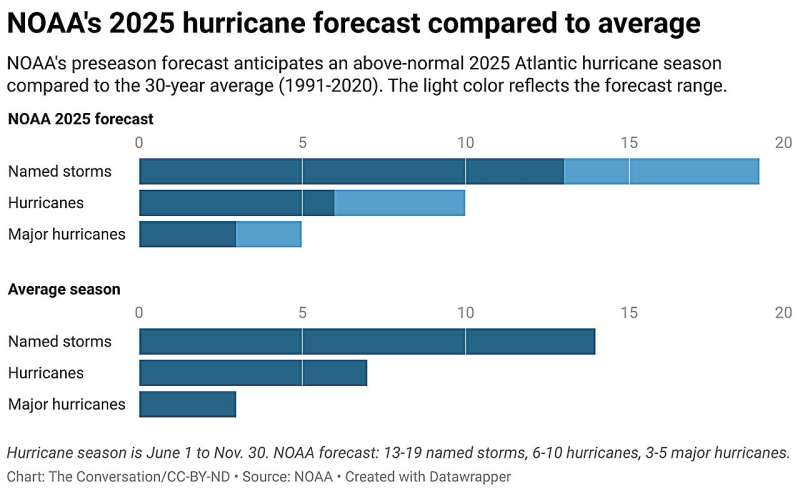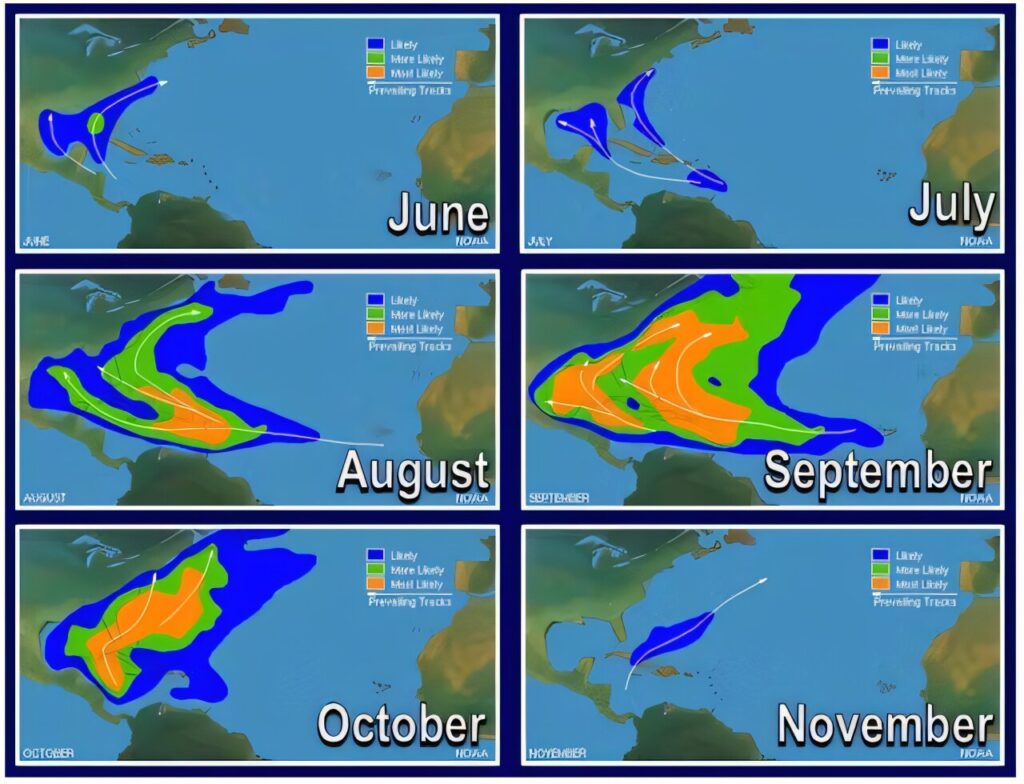Credit: CC0 Public Domain
As the calendar turns to June, signaling the start of the Atlantic hurricane season, meteorologists are forecasting an active year ahead. The National Oceanic and Atmospheric Administration (NOAA) anticipates 13 to 19 named storms, with 6 to 10 developing into hurricanes, and 3 to 5 potentially escalating into major hurricanes with winds exceeding 111 mph.
Decoding the Forecast: The Science Behind the Numbers
Seasonal hurricane forecasts are complex, relying on various climatic factors. Two primary elements influencing the 2025 outlook are sea surface temperatures and the El Niño–Southern Oscillation (ENSO).
Warm Waters Fuel Storms
Hurricanes derive energy from warm ocean waters. Currently, sea surface temperatures in the Atlantic are above the 30-year average, providing ample fuel for storm development.
NSO’s Role
ENSO cycles between El Niño, La Niña, and neutral phases, affecting atmospheric conditions. El Niño tends to suppress hurricane activity due to increased wind shear, while La Niña can enhance it. As of now, ENSO is in a neutral phase, offering neither significant suppression nor enhancement of storm formation .

Inland Areas: Not Immune
While coastal regions often bear the brunt of hurricanes, inland areas are not exempt. Storms like Hurricane Beryl in 2024 demonstrated that inland regions can experience severe flooding, tornadoes, and wind damage. In fact, inland flooding accounts for 60% of hurricane-related deaths in the U.S. over the past decade. Dailyscitech

These are generally the busiest areas during each month of hurricane season, but that doesn’t mean hurricanes won’t make landfall elsewhere. Credit: NOAA
Preparedness: Your Best Defense
Regardless of the forecast, preparation is key. Here are some steps to consider Dailyscitech
- Emergency Kits: Assemble kits with essentials like water, non-perishable food, medications, and important documents.
- Stay Informed: Utilize tools like the NOAA Emergency Weather Radio to receive real-time updates.
- Home Fortification: Install storm shutters and reinforce roofing to withstand high winds.
- Backup Power: Consider investing in a portable generator to maintain power during outages.
- Flood Barriers: For flood-prone areas, portable flood barriers can offer additional protection.
The Bigger Picture
Advancements in forecasting have improved the accuracy of hurricane predictions. However, challenges remain, such as staffing shortages at NOAA, which could impact data collection and analysis. Dailyscitech










